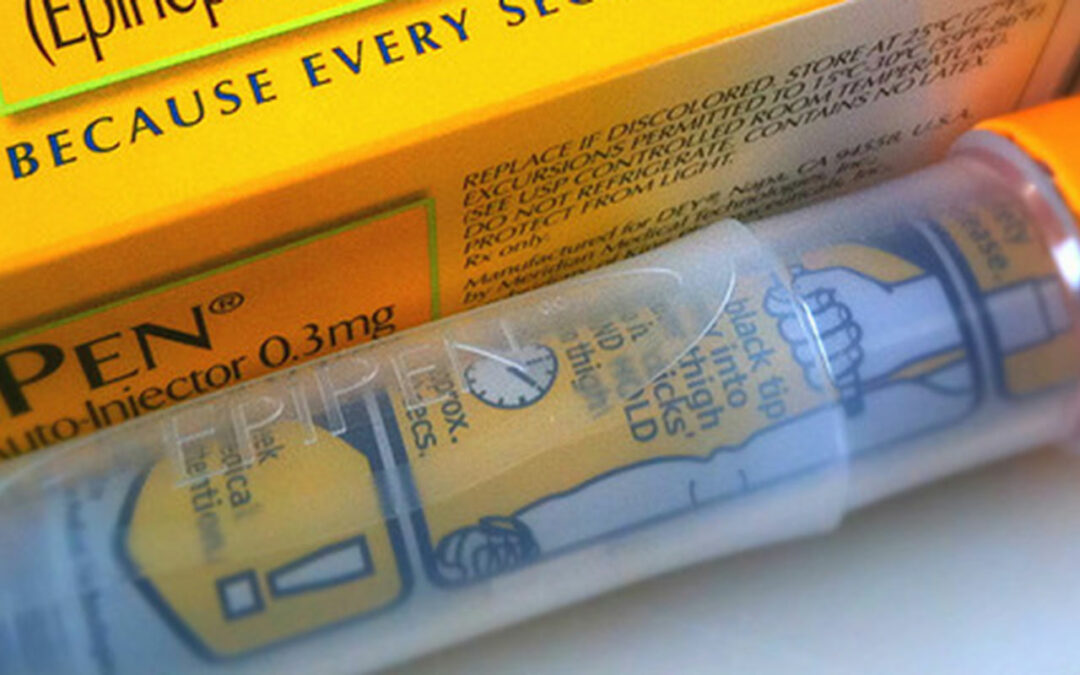For those who live with a life-threatening allergy, an EpiPen is an essential item to keep on hand. EpiPens contain a single dose of epinephrine, which works quickly to combat the life-threatening symptoms of anaphylaxis. Epinephrine works rapidly to stimulate the heart, improve breathing, reverse hives, raise dropping blood pressure, and reduce swelling in the throat, lips, and face.
There are many brands of epinephrine injectors, but most people have seen images for the EpiPen with the blue safety cap and orange tip that contains the needle. However, there is a new innovative product called the Auvi-Q, which is shaped like a smartphone and gives automated verbal instructions to lead a person through the injection. Check out the images of each below:
Here are five things every patient or caregiver should know about using an EpiPen:
- How to handle it.
You should always be sure to take off the safety cap and hold the pen with your fingers around it in a fist. Do not put your thumb on top of the EpiPen. Different brands of this medication have varying instructions for preparing and using the injector. Be sure to learn to properly handle and inject the medication in advance so you will be prepared to use it when the time comes. - Where to inject it.
The epinephrine should be injected directly into your outer thigh. It should not be injected into your hands, fingers, feet, buttock, vein, or any other part of your body. Seek immediate medical attention in the case of an accidental injection. - It can be administered while wearing pants.
Contrary to popular belief, the EpiPen injection can be delivered through clothing.
- Count to 10 while administering the epinephrine.
After you inject it into your thigh, hold the EpiPen in place and count to 10. This will allow the medication enough time to be delivered into your body.
- When you give or take the injection, call 911 immediately.
Epinephrine is fast acting, but temporary. After giving or taking an injection, you should immediately seek medical treatment, even if you are feeling better. Tell the medical professional that you have injected epinephrine.
This article was previously published here:
https://www.hudsonallergy.com/5-things-need-know-epipen/

